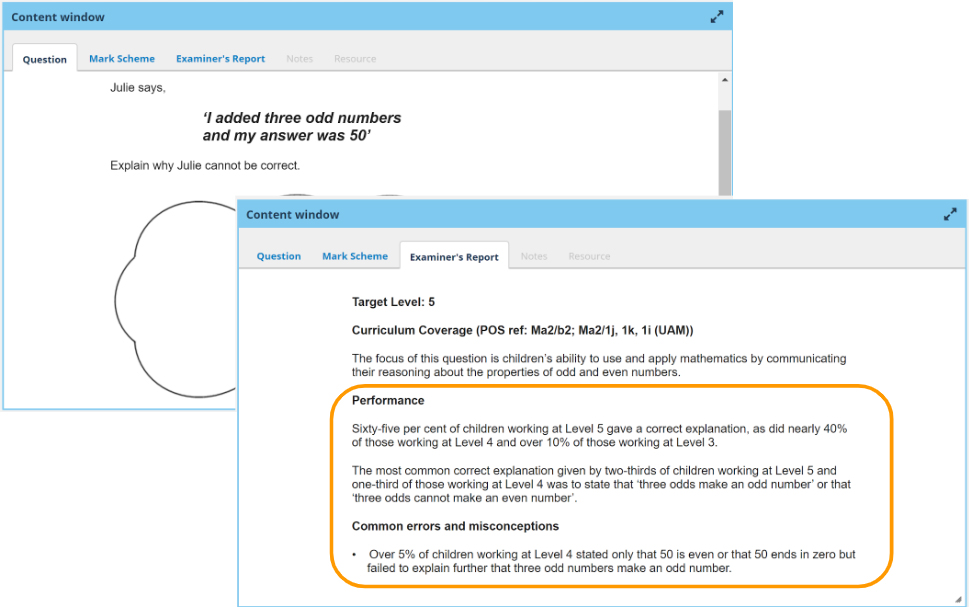2. Identifying starting points
The importance of diagnostic assessment
Summative assessment is used to make a judgement about learning and many schools are considering baseline assessments for the start of the year. However, they usually provide little information about pupils’ knowledge and understanding; just a mark or level.
In contrast, diagnostic assessment helps a teacher work out what a pupil thinks. It can be used to check on children’s prior knowledge and ideas before beginning a new topic.
The key to good assessment is to use the evidence to inform what should happen next.
For example, assessment might help identify individuals or groups who require pre-teaching or intervention. It might draw attention to whether they hold particular misconceptions that could be barriers to learning and progression. These help identify starting points in teaching.


Misconceptions as a starting point
New concepts are more easily learned when they can be connected to existing ideas and beliefs. However, misconceptions (or alternative conceptions) can create a barrier to understanding. As such, creating a classroom culture where misconceptions are revealed and addressed is important. Children should not be afraid of making mistakes as they provide further opportunities to learn and help deepen understanding.
For example, many children learn early on that a shortcut to multiplying by ten is to ‘add a zero’. However, what happens to a child’s understanding when they try to apply this rule when asked to multiply fractions or decimals by ten?
Identifying mistakes is helpful when deciding what to do as part of teaching. Understanding how these ideas have been formed will help teachers develop strategies for avoiding and addressing these misconceptions.
Common misconceptions can easily be identified in several ways, by:
- Discussing with colleagues
- Reflecting on personal experience; something that comes through having taught this a number of times
- Using subject knowledge; knowing the processes that sit behind what we want to achieve
- Researching pupil performance; the commentary that accompanies some past SATs papers can be a useful indicator of common misconceptions for particular test questions.
How does Testbase support you?
NEW! Primary Maths Progression Map
Fundamental statements from the test framework are organised into categories to help illustrate progression in key areas across the curriculum.
Embedded within the map are sets of assessment questions for priority areas for years 1 to 6. Each question exemplifies what children should know and understand for success in a particular objective and can be used to probe understanding through rich classroom discussions.
These sets can be used to:
- exemplify progression over time for your pupils
- highlight gaps in prior learning
- identify starting points in teaching
- refresh previous knowledge before starting the next stage.
Problem solving elements are embedded within each document.
The map helps teachers to see how their teaching fits into the “bigger picture” by highlighting and exemplifying content that has been taught in previous years and how skills and knowledge will be built upon in following years. It supports non-maths specialists to identify how to support less able pupils and stretch those who need additional challenges.

“It is a very effective resource as a school. It allows us to recap on prior learning, resources are updated and in line with the national curriculum and Ofsted framework.”
